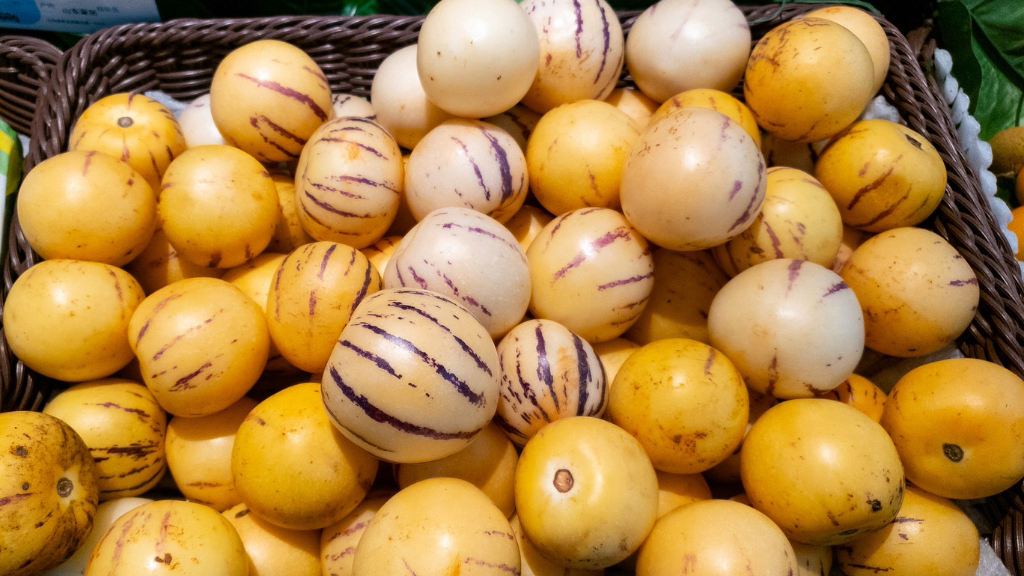History And Information On Pepino Melon


The pepino melon (Solanum muricatum) is shaped like a giant's teardrop, about as big as your hand. Despite its name, the pepino melon is not a melon at all. Pepino means "cucumber" in Spanish, but a pepino is not a cucumber either. It is the fruit of an evergreen plant that grows in South America and a member of the nightshade family (Solanaceae), like the tomato and the Irish potato. It is known by a variety of other names, like tree melon, bush melon, melon pear, apple melon and mellowfruit.
Information on Pepino Melon
Not very much about pepino melon history is known. The pepino is thought to be native to the mountain regions of Colombia, Peru and Chile, but its exact origin is a mystery. Currently, the plant is not found in the wild, but it was thriving in California by 1889 and is still grown there today. Here are a few more heirloom plant facts about this lovely fruit. Its smooth, yellow skin is striped with reddish-purple.
Typically, the pepino matures around 5 inches long and 3 inches in diameter. As it ripens, it gives off a deep, sweet smell. You'll know that the fruit is ripe when it turns creamy yellow and feels soft. Once the pepino ripens, keep it refrigerated and eat it within a few days. Pepinos have thin skin and no central pit, so they are easy to cut in half. You'll find soft, edible seeds and pale, peach-colored flesh. The fruit is fragrant and the flesh is sweet, combining the tastes of cantaloupe and honeydew.
You don't generally eat the pepino skin. The flesh is both low calorie and rich in antioxidants. Some say that it promotes healthy skin. In South Africa, it is eaten as a dessert. It can also be chopped into fruit salads, mixed into sauces or eaten with meat or fish. Some find its soft, mealy texture and weak flavor unsatisfying.
Growing Pepino Melons
Plant pepino seeds in well-draining soil with an acid neutral pH. Select a sunny site with moist soil. The seedlings grow into woody shrubs, about three feet tall, and are hardy only to USDA zone 9. The leaves of the plant look very much like those of the potato plant, but it grows like a tomato and requires staking. Expect flowers from August to October, with the fruit appearing from September through November.
Sign up for the Gardening Know How newsletter today and receive a free copy of our e-book "How to Grow Delicious Tomatoes".

Teo Spengler is a master gardener and a docent at the San Francisco Botanical Garden, where she hosts public tours. She has studied horticulture and written about nature, trees, plants, and gardening for more than two decades, following a career as an attorney and legal writer. Her extended family includes some 30 houseplants and hundreds of outdoor plants, including 250 trees, which are her main passion. Spengler currently splits her life between San Francisco and the French Basque Country, though she was raised in Alaska, giving her experience of gardening in a range of climates.